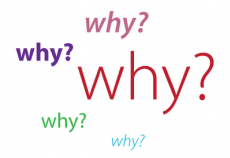
Email: ZYVC057@live.rhul.ac.uk
Total Article : 213
About Me:I'm a graduate student studying International Criminal Law and first started writing for King's News almost 4 years ago! My hobbies include reading, travelling and charity work. I cover many categories but my favourite articles to write are about mysteries of the ancient world, interesting places to visit, the Italian language and animals!

Rhythm and Rhymes are essential tools poets use to create specific desired effects and evoke emotions from their readers. Traditional poetic works such as sonnets would use as standardised rhyming scheme, for example in the case of sonnets it is: ABAB CDCD EFEF GG, forming three quatrains (four lines in a group) and a final couplet (two lines that rhyme).
Rhythm can be described literally as the heartbeat of a poem which brings the musicality of each and every word to life, whereas rhymes focus on connecting each line together and giving an overall structure to the poem, particularly with external rhymes. Rhyming can enhance poetry in many ways. It can provide pleasure as it is lyrically pleasing to the ear and can give musicality to any poem, giving a sense of harmony to the work. It can also make a poem seem more ‘right’ or ‘fitting’ as each verse seems to fit together, linked by the rhymes. In middle school In Italy, students have the task of learning poems off by heart and the rhymes helped greatly with this daunting task as it is easier to remember a word if it rhymes with the one in a previous verse and, also, the rhymes create a melody which is easier to remember and resonates in our minds even after reading the poem.
Rhymes can also be useful for strengthening the overall form of a poem. Traditionally, the rhyming words are found at the end of each line; this creates a breakage when the poem is read out loud and one can distinguish a verse from another, so the poem makes more sense and gains structure.
Another reason to rhyme is to make the meaning of the verse more profound. If two or more words rhyme the reader they immediately catch the reader’s attention as he/she connects the together in his/her mind. Rhymes can also be used to emphasise a specific action or to make it some repetitive.
The following poem is by A. A. Milne and is titled 'Puppy and I'; what effect does the rhyming words have on the poem overall? Does it make it more playful and easier to read?

Puppy And I
I met a Man as I went walking:
We got talking,
Man and I.
"Where are you going to, Man?" I said
(I said to the Man as he went by).
"Down to the village, to get some bread.
Will you come with me?" "No, not I."
I met a horse as I went walking;
We got talking,
Horse and I.
"Where are you going to, Horse, today?"
(I said to the Horse as he went by).
"Down to the village to get some hay.
Will you come with me?" "No, not I."
I met a Woman as I went walking;
We got talking,
Woman and I.
"Where are you going to, Woman, so early?"
(I said to the Woman as she went by).
"Down to the village to get some barley.
Will you come with me?" "No, not I."
I met some Rabbits as I went walking;
We got talking,
Rabbits and I.
"Where are you going in your brown fur coats?"
(I said to the Rabbits as they went by).
"Down to the village to get some oats.
Will you come with us?" "No, not I."
I met a Puppy as I went walking;
We got talking,
Puppy and I.
"Where are you going this nice fine day?"
(I said to the Puppy as he went by).
"Up to the hills to roll and play."
"I'll come with you, Puppy," said I.
Image 1:http://4.bp.blogspot.com/_ilVgx1VRxIY/SdB8h7IyuwI/AAAAAAAAAHI/9qVo0WGBj4Y/s400/5-why.png
Image 2:http://onin.london/assets/macexplorer.com-puppy-dog-26.jpg

0 Comment:
Be the first one to comment on this article.